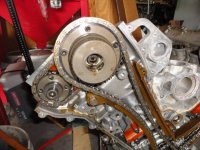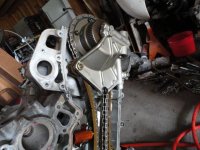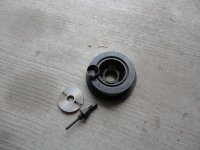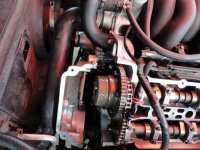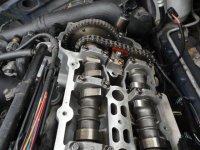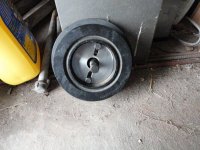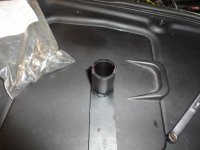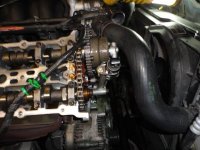The oil pressure problem was resolved by putting the oil pump from the original engine on the rebuilt engine. There was a lot of trash on the oil inlet screen for the pick-up tube.

Original pump in the left. The pump with the problem is more sophisticated with oil spray nozzles for the timing chains, but could not be used with the original pick-up. The oil pan had a lot of silver gunk which, if you have ever used Never-Seize, lead me to think that was used as the assembly lube on this rebuilt engine.
I am still having Restricted Performance with the following codes:
P1648 - Knock Sensor Input Chip.
Both sensors were replaced. I have cleaned the connectors located on both sides of the thermostat tower multiple times. Occasionally the code will clear, but comes back after a short run.
P0336 - Crankshaft Position Sensor Circuit A Range/Performance
I have disconnected and cleaned the sensor connector several times and finally replaced the sensor. Still have the code.
P1000 - There is not a listing for this code in the Generic and Jaguar specific OBD-II Diagnostic Trouble Codes list from Jag-Lovers. It is also not listed in the Actron Pocket Scan Code Reader code list.
Any Idea what the P1000 code is?
P1637 - CAN Link ECM/ABS Control Module Circuit/Network Any idea how to check this one?
And P1648 at the end of the five codes displayed.
I had gotten another ECM with the exact same part number on it, but have learned that the key has a chip that must be programmed with the ECM or the car will not start.
Other than trailer the car to a Jag dealer, any suggestions?

 Hi Guest!
Hi Guest!

 smilie in place of the real @
smilie in place of the real @
 Pretty Please - add it to our Events forum(s) and add to the calendar! >>
Pretty Please - add it to our Events forum(s) and add to the calendar! >> 
